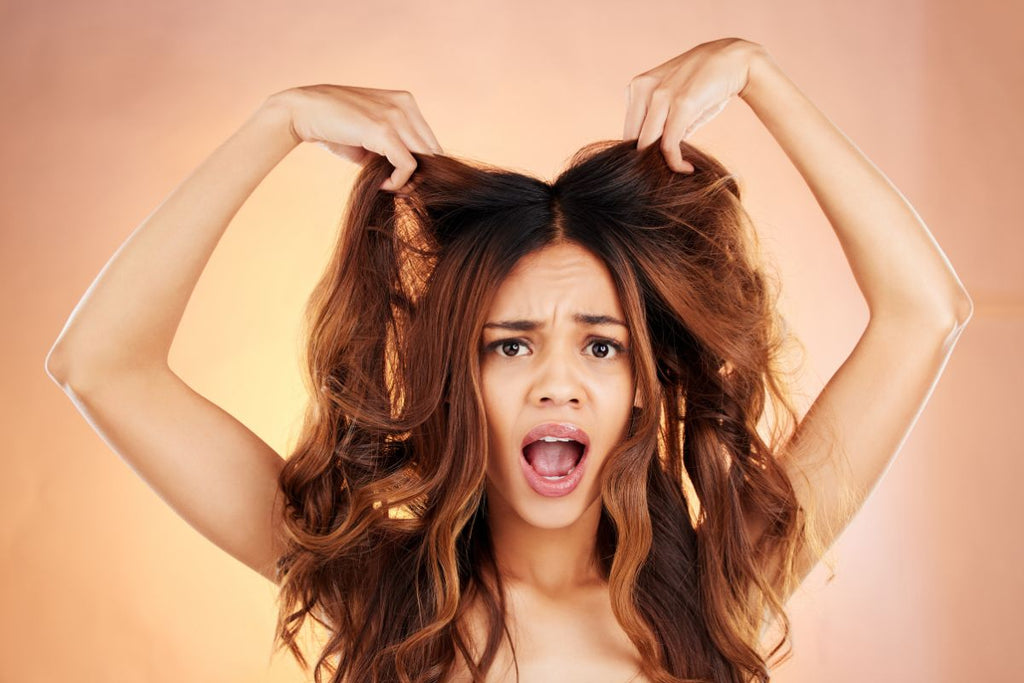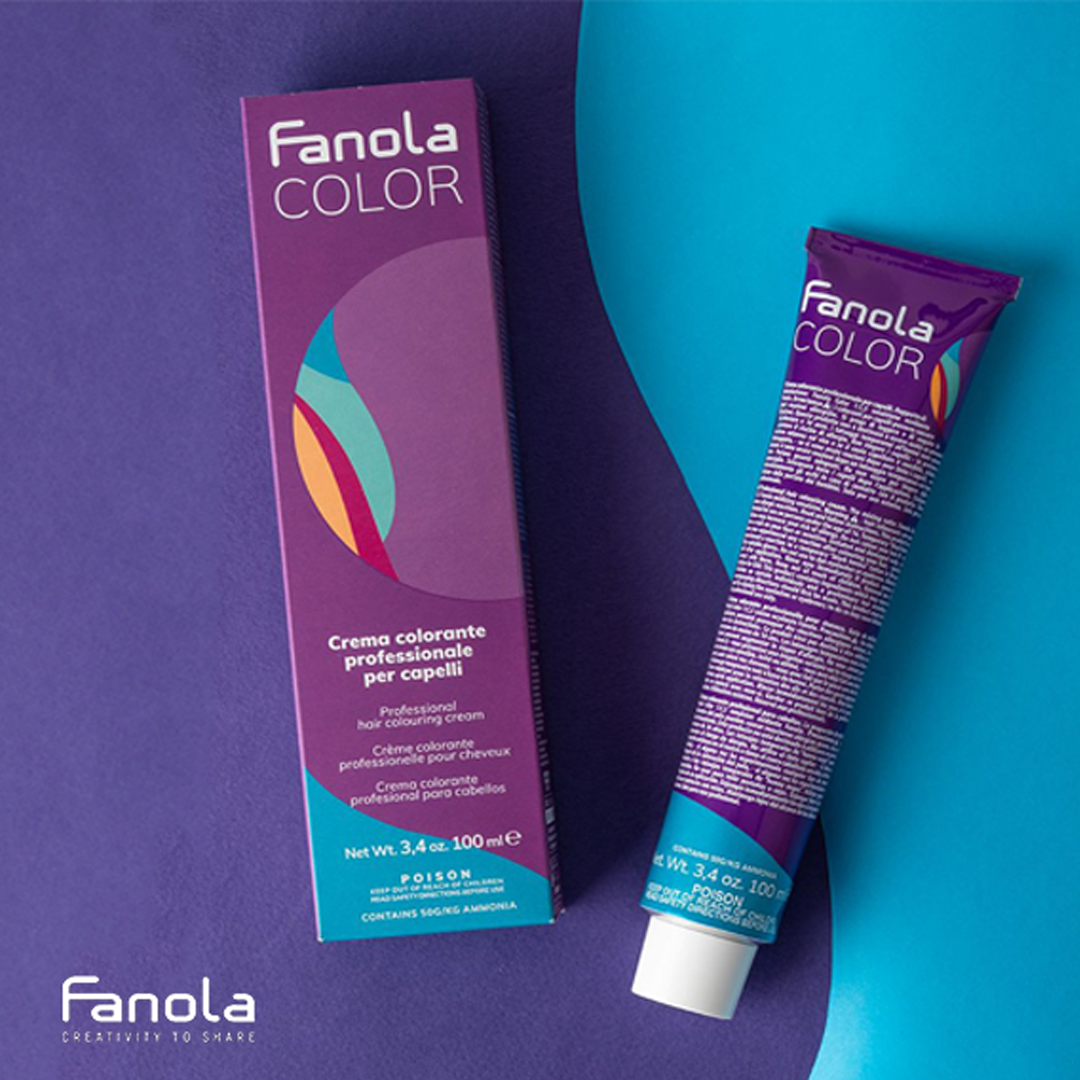How To Prevent Damage From Hair Treatments

Chemical hair treatments can transform your client's hair, adding style, texture and colour. However, without the right precautions, these treatments can lead to hair damage. This guide explores how to prevent damage from various chemical hair treatments, ensuring your clients maintain healthy, beautiful hair.
What are chemical hair treatments?
Chemical hair treatments are procedures that use various chemicals to alter the hair’s texture and appearance. They are widely used for colouring, straightening, perming or smoothing hair. While these treatments offer great aesthetic benefits, they can compromise hair health if not performed or maintained correctly.
Why can chemical hair treatments be damaging to the hair?
Chemical treatments can change the structure of the hair, weakening its protein bonds and altering its ability to retain moisture. This can lead to hair that is dry, brittle and prone to breakage.
Different Chemical Hair Treatments and How to Prevent Damage

1. Hair Colouring
- Effect on Hair Structure: Hair colouring involves dyes and chemicals that penetrate the hair cuticle to deposit colour. This process can lift the cuticle to allow pigment absorption.
- Potential Damage: Repeated colouring can weaken the hair shaft, increase porosity and reduce elasticity, resulting in dryness, breakage and a rough texture.
Prevention Tips:
- Ammonia-Free Dyes: Choose semi-permanent or ammonia-free dyes to minimise damage
- Deep Conditioning: Apply a deep conditioning mask 1–2 days before colouring to hydrate and prepare hair
- Colour-Safe Products: Use shampoos and conditioners specifically formulated for colour-treated hair to lock in colour and maintain moisture
2. Chemical Relaxing/Straightening
- Effect on Hair Structure: Relaxing treatments use strong chemicals like sodium hydroxide or ammonium thioglycolate to break the natural bonds in curly or wavy hair, reshaping it to a straight form.
- Potential Damage: These chemicals can weaken the hair’s protein structure, making it more prone to brittleness, dryness and split ends.
Prevention Tips:
-
Protein Treatments: Regularly use protein-rich masks before and after relaxing treatments to strengthen hair bonds
-
Avoid Overlapping: Do not apply relaxers to previously treated hair to avoid over-processing and breakage
-
Moisturise: Chemical relaxers strip hair of natural oils, so follow up with moisturising leave-in conditioners and natural oils like argan or coconut oil

3. Perming
- Effect on Hair Structure: Perming involves breaking disulfide bonds in the hair and reshaping it around curlers or rods, followed by neutralising to set the curls.
- Potential Damage: This process can make the hair more porous and weaken the hair shaft, leading to potential dryness, frizz and breakage if not cared for properly
Prevention Tips:
-
Pre-treatment Strengthening: Prepare hair by using protein treatments a week before perming to help fortify the strands
-
Post-treatment Care: Use curl-defining, nourishing creams and avoid excessive brushing to maintain curl shape and prevent frizz
-
Hydration: Keep hair hydrated with lightweight, curl-specific conditioners to maintain elasticity and prevent breakage
4. Hair Smoothing Treatments
- Effect on Hair Structure: Treatments like keratin smoothing or Brazilian blowouts coat the hair with proteins or chemicals to seal the cuticle, creating a smooth, shiny look.
- Potential Damage: While less damaging than permanent chemical straightening, some smoothing treatments may contain formaldehyde or similar substances that can weaken the hair over time. Repeated use can lead to loss of natural volume and brittle hair
Prevention Tips:
- Sulfate-Free Products: Use sulfate-free and sodium chloride-free shampoos and conditioners to maintain the longevity of the smoothing treatment
- Protective Serums: Apply heat protectants before using any heat tools post-treatment
- Avoid Washing: Delay washing hair for at least 72 hours after a smoothing treatment to allow it to set properly
5. Hair Bleaching

- Effect on Hair Structure: Bleaching uses strong chemicals like hydrogen peroxide and ammonia to strip the hair of its natural pigment, opening the cuticle and breaking down melanin.
- Potential Damage: Bleaching is one of the most damaging processes, making hair prone to dryness, split ends and loss of elasticity.
Prevention Tips:
- Bond Builders: Use products that contain bond-building technology during the bleaching process to maintain hair strength and reduce damage
- Hydration: Apply a deep conditioning treatment a few days before bleaching to ensure hair is well-moisturised
- Aftercare: Avoid heat styling right after bleaching and use purple shampoos to prevent brassiness while maintaining hydration with leave-in conditioners
General Tips for Hair Health
- Hydration: Keeping the hair well-moisturised is essential after any chemical treatment
- Protein Balance: Maintaining a balance between protein and moisture can help prevent breakage and maintain hair strength
- Gentle Handling: Reduce physical stress on the hair by using wide-tooth combs and avoiding tight hairstyles
- Avoid Overuse: Space out treatments to prevent cumulative damage
By following these hair damage prevention tips, you can ensure your clients enjoy the benefits of chemical hair treatments while keeping their hair healthy and strong. Always use safe techniques, invest in high-quality products and educate clients on at-home maintenance for the best results.






